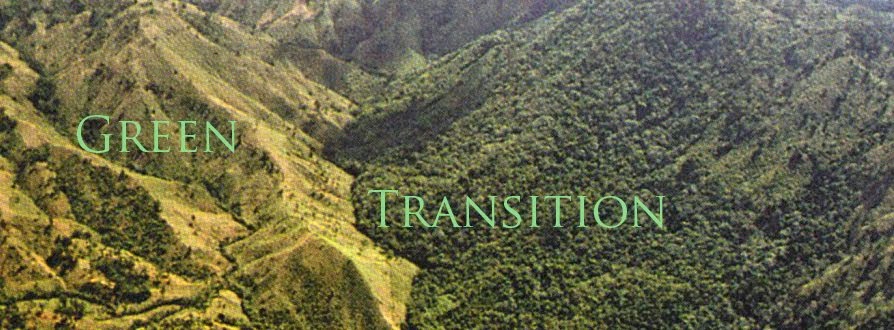The image in the heading is a photo of the border between Haiti and the Dominican Republic. Despite each side of the border experiencing a common climate and topography, the radical difference in outcomes is clear: the Dominican side is richly forested while the forest on the Haitian side has been completely harvested. To me this illustrates how human institutions are significant determinants of environmental outcomes which implies that changes in these human institutions can achieve significant environmental changes.
As the scientific evidence of anthropogenic climate change continues to grow, it is apparent that such institutional changes are necessary in order to mitigate the severity of global warming and adapt to a changing and increasingly variable climate. To put it simply, economic activity needs to change (as illustrated in the Soulwax video below) and the term 'green transition' can be used to describe the process of change from current economic practices to an economic system that is less environment-intensive and more environment-resilient.
Coming from a background in economics and geography, I intend to use this blog to explore two related topics: the various ways in which such a green transition can be achieved and the ways in which economic methods themselves need to change in order to enable more environmentally sustainable decision making.
As well as developing my own opinions on these subjects, I hope that this blog will make readers aware of some disputed areas within environmental economics and highlight the importance of economic methodologies as – despite sounding like a cripplingly dull topic – these practices significantly impact environmental policy decisions and are therefore critical to achieving a green transition.
Enjoy!

No comments:
Post a Comment